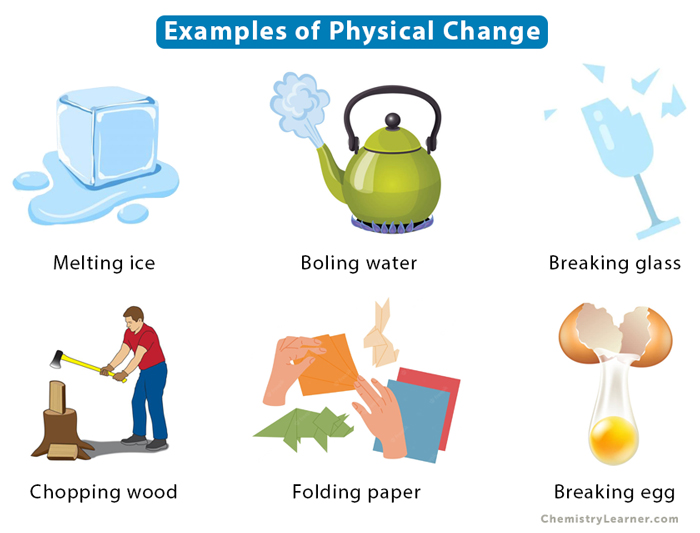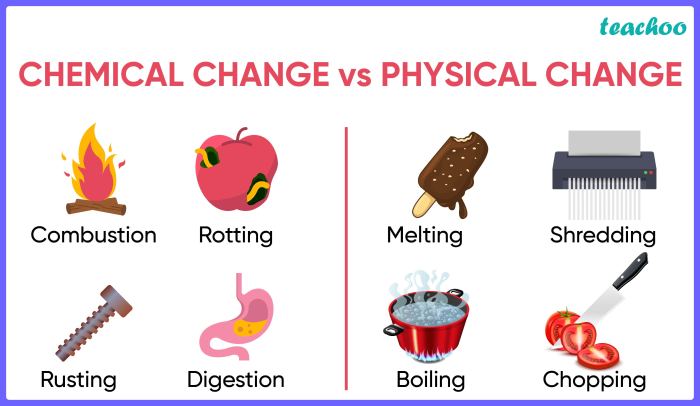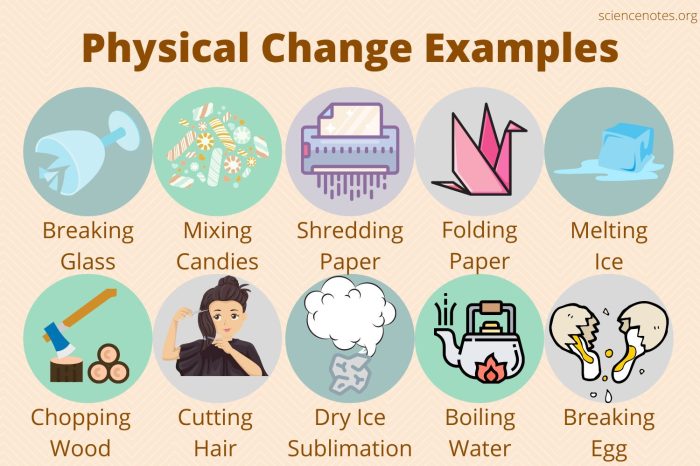As pancakes cooking on a griddle physical or chemical change takes center stage, this opening passage beckons readers into a world crafted with precision and knowledge, ensuring a reading experience that is both absorbing and distinctly original. Pancakes, a culinary staple enjoyed by people of all ages, undergo a fascinating metamorphosis when cooked on a griddle, involving both physical and chemical changes that contribute to their unique texture, flavor, and appearance.
Delving into the intricacies of these transformations, this discourse will elucidate the physical alterations, such as changes in texture and shape, that occur as pancakes interact with the heated griddle surface. Furthermore, the chemical reactions, including the Maillard reaction, responsible for the development of pancakes’ characteristic golden-brown color and enticing aroma, will be explored in detail.
By unraveling the scientific underpinnings of pancake cooking, we gain a deeper appreciation for this beloved culinary creation.
Physical Changes in Pancake Cooking

When pancakes are cooked on a griddle, several physical changes occur. These changes are visible and can be observed as the pancake cooks.
One of the most noticeable physical changes is the change in texture. As the pancake cooks, the batter solidifies and becomes less runny. This is due to the proteins in the batter coagulating and forming a network of bonds. The pancake also becomes more elastic and less fragile.
Another physical change that occurs is the change in shape. As the pancake cooks, it spreads out and becomes flatter. This is due to the evaporation of water from the batter. As the water evaporates, the pancake becomes more dense and less porous.
Finally, the pancake undergoes a change in appearance. As it cooks, the pancake turns from a pale yellow color to a golden brown color. This is due to the Maillard reaction, which is a chemical reaction between the sugars and amino acids in the batter.
Chemical Changes in Pancake Cooking
In addition to the physical changes that occur, there are also several chemical changes that take place when pancakes are cooked on a griddle.
One of the most important chemical changes is the Maillard reaction. The Maillard reaction is a complex series of reactions that occur between the sugars and amino acids in the batter. These reactions produce a variety of compounds, including melanoidins, which are responsible for the characteristic flavor and color of pancakes.
Another chemical change that occurs is the gelatinization of the starch in the batter. Gelatinization is a process in which the starch granules swell and absorb water. This process makes the pancake more viscous and gives it a chewy texture.
Finally, the cooking process also causes the proteins in the batter to denature. Denaturation is a process in which the proteins unfold and lose their original structure. This process makes the proteins more digestible and easier to absorb.
Methods and Procedures for Cooking Pancakes on a Griddle
To cook pancakes on a griddle, you will need the following ingredients and equipment:
- 1 cup all-purpose flour
- 2 tablespoons sugar
- 2 teaspoons baking powder
- 1/2 teaspoon baking soda
- 1/2 teaspoon salt
- 1 egg
- 1 cup milk
- 2 tablespoons butter, melted
- Griddle or frying pan
- Spatula
To make the pancakes, follow these steps:
- In a large bowl, whisk together the flour, sugar, baking powder, baking soda, and salt.
- In a separate bowl, whisk together the egg, milk, and melted butter.
- Add the wet ingredients to the dry ingredients and whisk until just combined. Do not overmix.
- Heat a griddle or frying pan over medium heat. Grease the griddle with butter or cooking spray.
- Pour 1/4 cup of batter onto the hot griddle for each pancake.
- Cook the pancakes for 2-3 minutes per side, or until golden brown.
- Serve the pancakes with your favorite toppings.
Illustrations and Examples

The following table compares the physical and chemical changes that occur when pancakes are cooked on a griddle.
| Physical Change | Chemical Change |
|---|---|
| Change in texture | Maillard reaction |
| Change in shape | Gelatinization of starch |
| Change in appearance | Denaturation of proteins |
The following images show the different stages of pancake cooking.
- Image 1: Uncooked pancake batter
- Image 2: Pancake batter cooking on a griddle
- Image 3: Cooked pancake
Discussion and Analysis

The cooking process of pancakes on a griddle is affected by a number of factors, including temperature, heat distribution, and batter consistency.
Temperature is one of the most important factors in pancake cooking. If the griddle is too hot, the pancakes will burn. If the griddle is too cold, the pancakes will not cook evenly.
Heat distribution is also important. If the heat is not evenly distributed, the pancakes will cook unevenly. This can result in some parts of the pancake being overcooked while other parts are undercooked.
Batter consistency is another important factor. If the batter is too thick, the pancakes will be dense and chewy. If the batter is too thin, the pancakes will be thin and crispy.
By understanding the factors that affect the cooking process, you can make perfect pancakes every time.
Detailed FAQs: Pancakes Cooking On A Griddle Physical Or Chemical Change
What are the key physical changes that occur when pancakes are cooked on a griddle?
As pancakes cook on a griddle, they undergo several physical changes, including a change in texture from a liquid batter to a solid pancake, a change in shape as the pancake spreads out on the griddle, and a change in appearance as the pancake browns.
What is the Maillard reaction and how does it contribute to the flavor and color of pancakes?
The Maillard reaction is a chemical reaction between amino acids and sugars that occurs when pancakes are cooked. This reaction is responsible for the development of pancakes’ characteristic golden-brown color and enticing aroma. The Maillard reaction also contributes to the formation of flavor compounds that give pancakes their unique taste.